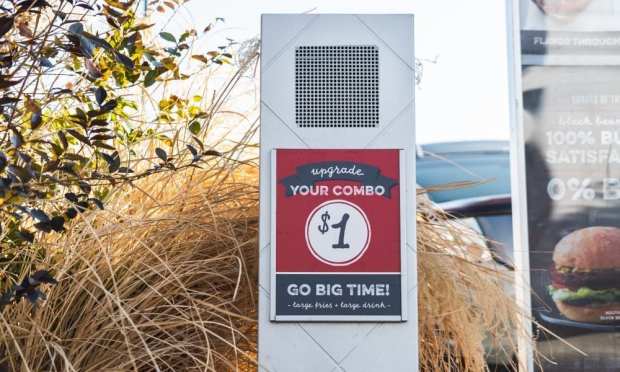When Conversational AI Meets The QSR Drive-Thru

Some entrepreneurs develop new tools after they find that existing technology doesn’t meet the needs of a specific market: Valyant AI CEO and Founder Rob Carpenter, in one case, realized that a lot of the conversational artificial intelligence tools on the market were not well-positioned for enterprises. “They’re good tools for the consumer space,” Carpenter said, adding that they are more forgiving when people ask for music or directions. However, if a company has an entire business depending on conversational AI, “then you need something new.”
Carpenter ended up spending two years developing a proprietary conversational AI platform that focuses on making the drive-thru faster at quick-service restaurants (QSRs). As soon as customers pull up to the drive-thru window at a restaurant where the technology is enabled, “our software will greet [them] and [they will] immediately be able to start carrying on a conversation with it,” Carpenter said. The technology also seeks to make the lives of employees better: These workers might be already taking orders, processing payments, putting food into bags and filling cups with drinks.
The technology starts when a sensor under the customer’s car sends a beep to an employee’s ear signaling that someone is waiting to place an order. His technology grabs the same signal and fires off a greeting to welcome the diner to the restaurant (and announces itself as an AI assistant). “We’re really trying to deliver a next-gen conversational AI experience,” Carpenter said. The customer, then, in turn, goes ahead and places their order. The system also doesn’t have a structured flow and is designed to let the customer order food however they’d like.
The customer, in turn, pulls to the drive-thru where the food might already be ready for them, and pays for it just like they usually would if they weren’t using the AI technology. With the convenience provided by the solution, however, Carpenter claims that he has seen a 25 to 50 percent reduction in the wait time for the customer. Moreover, Carpenter also noted that there is a benefit for the entrepreneurs who own the restaurant: They can generate more revenue by serving more customers.
The Technology
Carpenter noted that the technology integrates with a restaurant’s existing point of sale (POS) system and that it understands all the data that it needs to place an order. If a customer does not provide a complete order, it will follow up and ask the customer for additional information. Currently, the platform is used to take breakfast orders. In that case, a customer might pull up to the drive-thru window and place a general order for a breakfast item.
While the diner might say that he wants a burrito, the restaurant could serve five different varieties of that food. For that reason, his system will follow up and ask what kind of burrito the customer would like (e.g., back, chorizo, sausage, egg and cheese or plain). The customer can then say that he would like bacon, and, since the technology works to understand the context, the customer doesn’t have to repeat the earlier part of his statement.
The World Of AI
The offering comes as consumers are becoming used to voice assistants on the market such as Alexa and Siri. “They’re getting more and more comfortable carrying on conversations with these systems,” Carpenter said. And, while he expected diners to stress-test the systems and make it as hard as possible for them to work, he has noticed that hasn’t been the case. Customers, however, have been forgiving of the system. Instead of providing his system with long stream-of-consciousness ordering, they have slowed down and enunciated their speech as soon as the technology announces itself as a virtual order assistant.
And, while Carpenter’s company is getting started with fast food and looking to build a niche position in the market, he has been talking with banks as well as other retailers and hotels. “There’s a huge amount of opportunity in this space over the next decade,” Carpenter said. And, within restaurants themselves, the technology could have other applications. He noted that it could be deployed in mobile apps or kiosks, which could suggest an item for a consumer to try if they request an item that the restaurant no longer carries.
From mobile apps to kiosks and drive-thrus, then, conversational artificial intelligence (AI) technology built for enterprise businesses could provide a new fast and convenient way for consumers to order QSR fare — and potentially change how customers interact with retailers in other settings, too.
